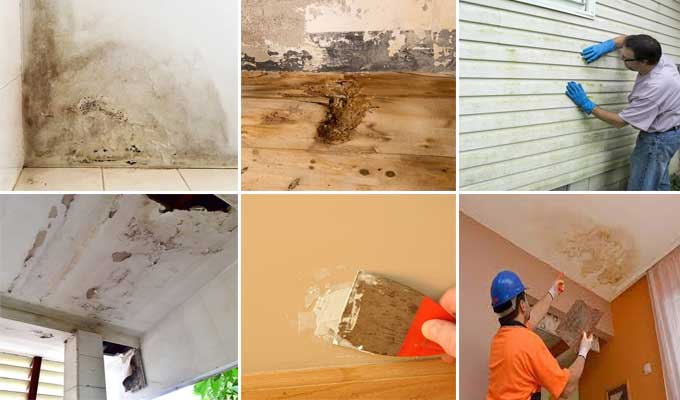
Top 5 Tips for Water Damage Repair
Water damage or flooding in your home can be one of the most devastating things you can experience. Numerous issues can cause major damage, such as leaking pipes, sewer backups, flooded basements, and even water damage after a fire.
A small amount of water can cause mold to grow in as little as 24 hours. In addition to safety hazards, water damage can cause structural problems that you may not even realize until it is too late.
Stopping the leak or figuring out what the problem is the priority. The next step is to contact a professional for water damage restoration procedures to prevent additional water damage and moisture damage in your home after the flood has been contained.
1. Safety First
When your home is flooded or damaged by water, it is crucial to ensure your family's safety. You can do several things to keep yourself and your family safe.
Shut Down Power Appliances
There is no way to mix water and electricity. The best course of action is to call an electrician if turning off the power involves entering or standing in wet areas. Before turning off the electricity in a flood-damaged home, do not reenter the building.
Wear Protective Gear
You should wear protective clothing when you enter your home again, such as rubber boots and gloves. As a result, you will protect yourself from getting contaminated with bacteria when you do this.
Save Your Valuable Assets
Lifting wood furniture away from wet carpet areas and inserting tin foil under the feet will help prevent carpet stains. You should also remove rugs that might be on wet carpets.
If the flooding becomes severe enough, you may evacuate. After you return home, make sure your home is still safe when you start dealing with the aftermath. Avoid driving through flooded areas.
2. Mold & Mildew Inspection
Causes
Detect mold and mildew on damaged materials. It can take as little as 24 hours for mold to start growing under the right conditions. Mold growing in attics caused by condensation may have been present for a long time before causing long-term issues.
Mold can grow in hidden areas such as inside walls or under floors. As a result, the water damage repair and inspection will continue.
Solution
When it comes to mold and mildew problems, you should be very cautious. A variety of molds are toxic to humans, and all molds wreak havoc on materials it infests. When it comes to small mold problems, you should cut out the material, bag it up, and throw it away right away. Getting out of the area, closing off any airflow, and getting in touch with a professional should suffice for serious mold issues.
3. Affected Area Dryness & Remove Humidity
It's crucial to remove all moisture as soon as possible to prevent further damage. The process may be straightforward for small leaks, but it's important to be thorough. Make sure the area is properly aired. To dry out surrounding carpet and wood thoroughly, consider renting a dehumidifier with a large capacity. Water damage repair should leave no moisture behind.
4. Porous Materials Removal
Carpeting, insulation, fabrics, and other porous materials are examples of porous materials. It may be necessary to cut them out and discard them with water. By shrinking or warping most porous materials, water permanently damages them, and mildew will make the damage even worse. You may be able to salvage a beloved piece of furniture by isolating and drying it out, but the damage may already happen, especially if you see drywall water damage. Unsealed cement, drywall, and wood are prime examples of Porous Materials.
5. Roof Water Damage
Gravity makes water-damaged ceilings more prone to collapse: You don't want them to sag. If a ceiling board is damaged, remove it immediately. Identifying the true source of a leak is essential. If a roof problem caused the leak, the stain likely came from far away.
That is the time to make sure the water does not damage the beam or rafter. For more information on the cost of replacing a water-damaged ceiling, you can contact professionals.
Total Time Cost Requirement of fixing Water Damage
It will take a certain amount of time to repair water damage, depending on when the affected material dries up and how severe the damage is. You should be able to dry out a single room, maybe two, in 72 hours, followed by 1-2 weeks towards the actual damage repair.
You may have a burst pipe or a flooded basement. Water clean-up cannot be put off, no matter how bad the initial damage is. As a result, it will absorb water from the floors, the walls, your furniture, and other areas of your home very quickly.
You can also remove water from your home by adding a high-power pump. Draining water from a crawl space or basement requires a high motor pump. Drainage pipes connect the high pump to the outside of the house. The elevated water level activates the pump, which pumps water out of your home when it rises above the sump pit bottom.
To get more details, watch the following video tutorial.
Video Source: Home RenoVision DIY


